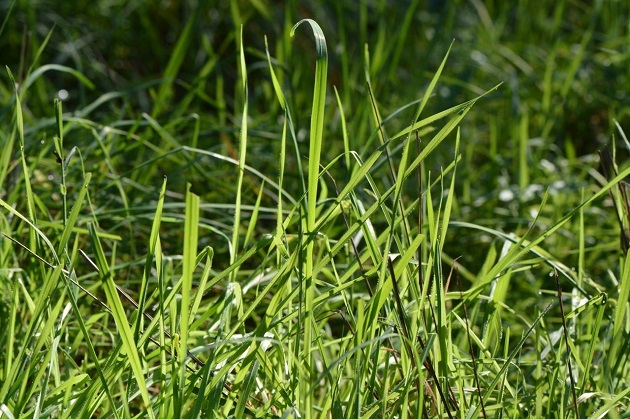In the Holy Land alone, there are some 90 types of herbaceous plants, each divided into hundreds of different subspecies.
 Photo: Antonio Cruz.
Photo: Antonio Cruz.
And the earth brought forth grass, and herb yielding seed after his kind, and the tree yielding fruit, whose seed was in itself, after his kind: and God saw that it was good. (Gn.1:12)
In botanical terms, “grass” is the term used for any type of vegetation that lacks a wood-based trunk, whose stem is soft, green and appears annually, or in somewhat longer periods after shedding its seed. Some types of grass are graminoids, that is to say with a narrow, elongated leaf, while grass with wider leaves is called forbia. In the Bible, the Hebrew term jatsir, which has an imprecise meaning, is used of grasses in general, and also for hay and gramma (Job 8:12; 40:15; Psalm 104:14; Numbers 11:15) or for the green vegetation of the fields, or which grows in courtyards and outdoor enclosures (Isaiah 34:13; 35:7). This Hebrew word was translated into Greek as khortos, which means “an enclosure for pasture”, and is the word from which the Latin term hortus derives. Later it came to be used to refer to “fodder for livestock” (Matthew 6:30; 13:26; 14;19; Mark 4:28; 6:39; Luke 12:28; John 6:10; James 1:10; 11:1; 1 Peter 1:24; Revelation 8:7; 9:4). In Hebrews 6:7 the Greek term botane, also appears to refer to grass as a blessing from heaven. This term derives from the Greek verb bosko, to feed, and is also the source of the English term “botany”.
In Genesis (1:11-12) we read that during creation, the earth produced green grass with seed and fruit trees according to their kind, each with its corresponding seeds. In the Holy Land alone, there are some 90 types of herbaceous plants, each divided into hundreds of different subspecies. The image of the grasses that grow spontaneously in the morning, only to be mown down by men in the evening is used in the Bible to symbolise the brevity of human life (Psalm 103:15, 16; cf Psalm 37:2; 90:5,6; 92:8; 102:12; Isaiah 40:6,7,8; Matthew 6:30; Luke 12:28) and reminds us that, by contrast, the Word of the Lord endures forever (Isaiah 40:8).
In his commentary on psalm 90, Charles Spurgeon wrote the following lines [1]:
In the morning it flourisheth, and groweth up. Blooming with abounding beauty till the meadows are all besprent with gems, the grass has a golden hour, even as man in his youth has a heyday of flowery glory.
In the evening it is cut down, and withereth. The scythe ends the blossoming of the field flowers, and the dews at flight weep their fall. Here is the history of the grass--sown, grown, blown, mown, gone; and the history of man is not much more. Natural decay would put an end both to us and the grass in due time; few, however, are left to experience the full result of age, for death comes with his scythe, and removes our life in the midst of its verdure. How great a change in how short a time! The morning saw the blooming, and the evening sees the withering.
[1] Spurgeon, C. H., The Treasury of David

Las opiniones vertidas por nuestros colaboradores se realizan a nivel personal, pudiendo coincidir o no con la postura de la dirección de Protestante Digital.
Si quieres comentar o